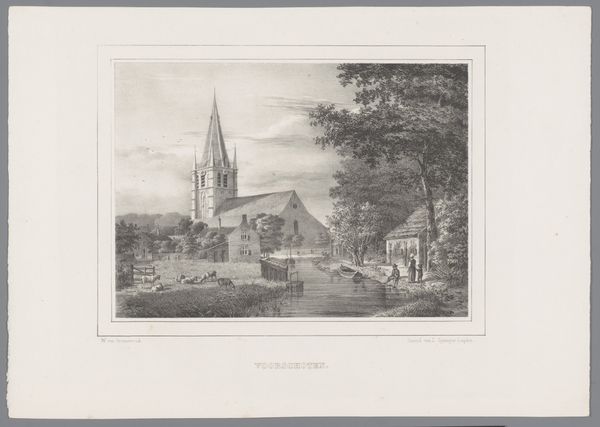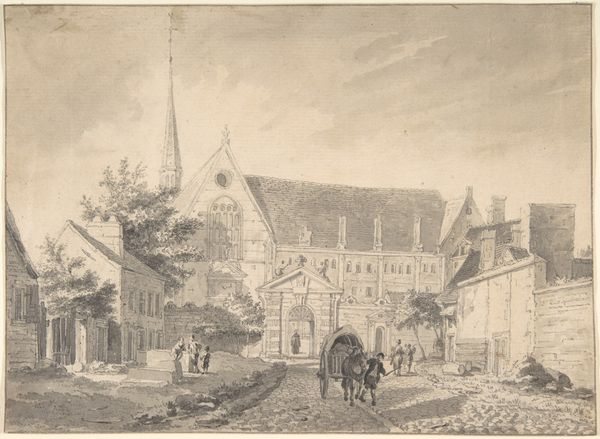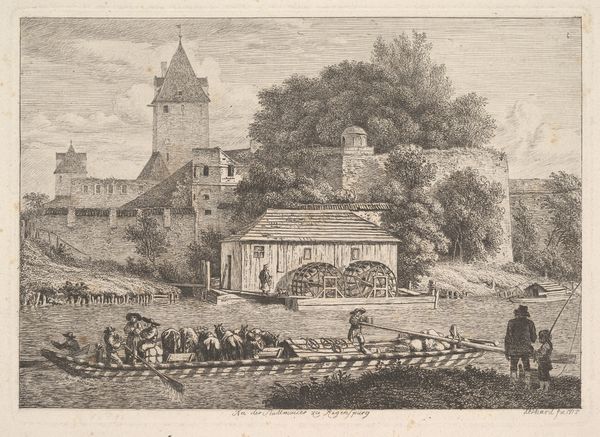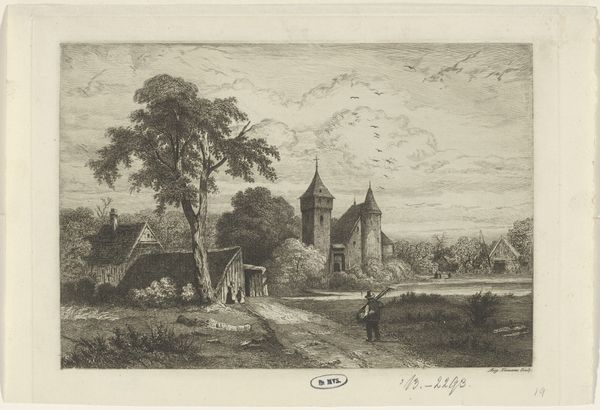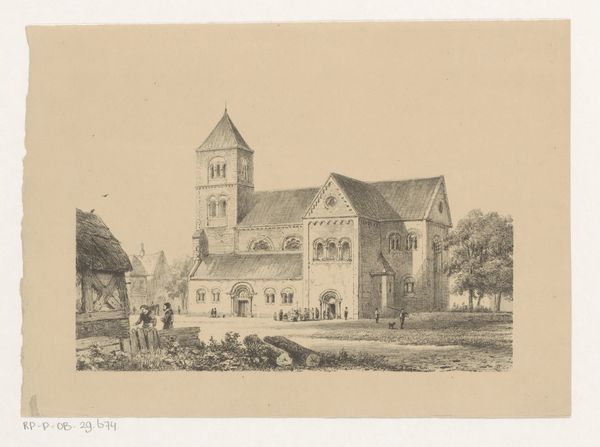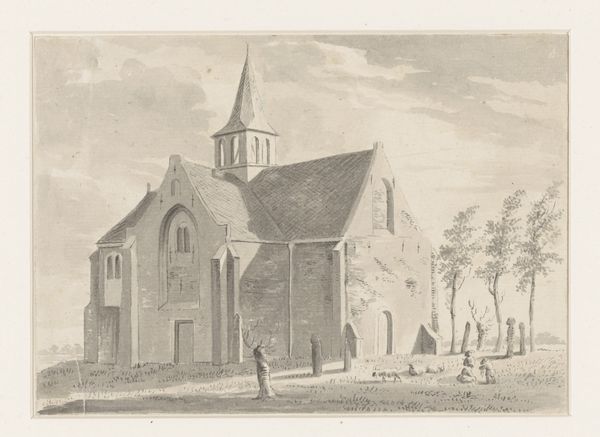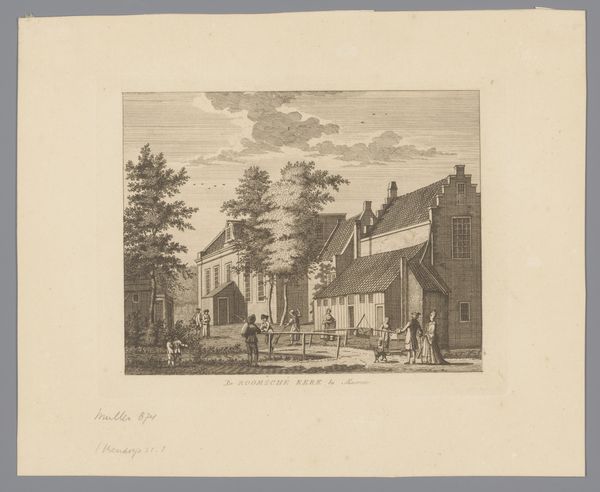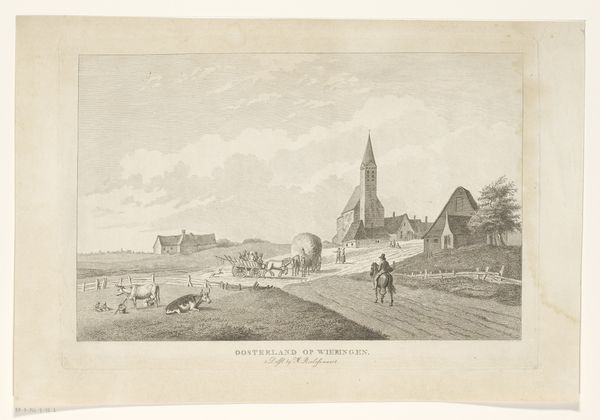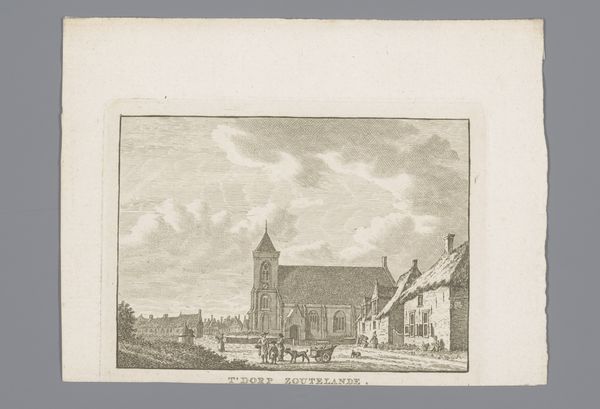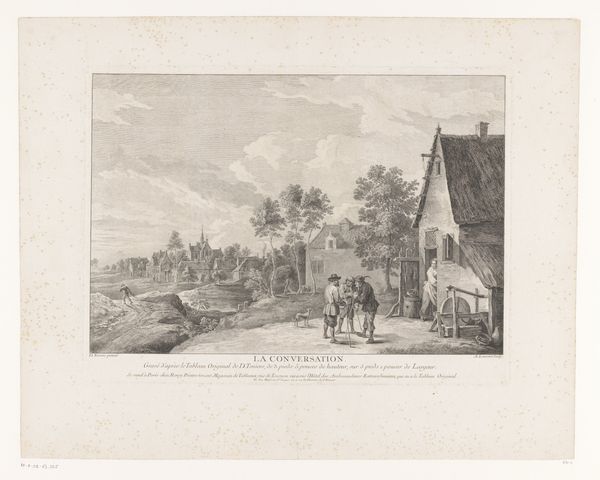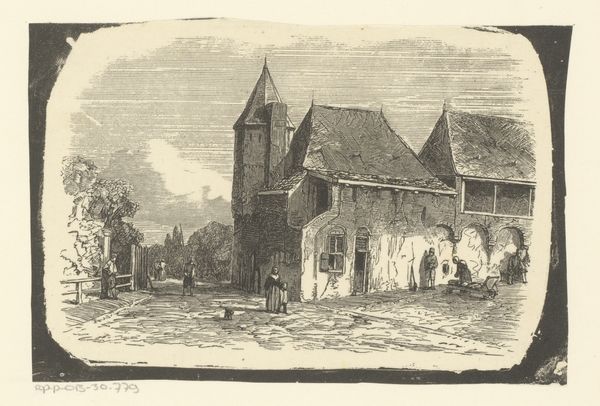
Dimensions: height 194 mm, width 292 mm
Copyright: Rijks Museum: Open Domain
Curator: Cornelis Springer crafted this etching titled "Runderen met wagen voor elfde-eeuwse kerk" around 1860-1861. What strikes you upon seeing it? Editor: Initially, I'm drawn to the contrasting weight of the church and the ox-led cart; it gives the scene an almost mournful and sobering air. The looming church hints at enduring power juxtaposed with the small lives passing before it. Curator: Absolutely. Springer frequently engaged with architectural subjects. Considering that context and period, the choice of the Romanesque church in the cityscape grounds us in the tension of modernization against long-standing, immutable religious institutions, specifically their material presence in Dutch society and life. Editor: The cathedral, clearly built in the 11th century, is solid and steadfast. Note how Springer has situated it just slightly left-of-center, to give ample visual room for the oxen, laborers, and families near the center of the road. In that small group is a rich narrative about labor, and everyday resilience and strength. Oxen often symbolize steadfast determination and perseverance, reflecting the laboring class. Curator: Precisely! And viewing this piece through a social lens, we must consider these images are documents embedded with class assumptions and colonial gazes that naturalized unequal distribution of resources. The working class bears an economic load, yet remain excluded from its benefits and representation, carrying on century after century, load after load. Editor: The fog itself is incredibly interesting; how does that symbolism further the cultural reading of the overall cityscape scene? Does it symbolize a time of turmoil or perhaps confusion with how life is transforming so rapidly during that time in European history? Curator: Good question. The haziness serves a romantic trope by obfuscating, but I wonder also if the soft rendering does symbolic work to soften what in actuality would be rather severe socioeconomic disparity. Springer offers an image steeped in longing for a rural or medieval world on the cusp of disappearing and leaving groups disenfranchised and alienated from one another. Editor: The symbolism seems so apt. Curator: Indeed, the etching carries visual depth and also depth socially, encouraging dialogue on power, class and resilience through shifting societal frameworks. Editor: Agreed; such depth, making it both a striking composition and potent cultural object!
Comments
No comments
Be the first to comment and join the conversation on the ultimate creative platform.
